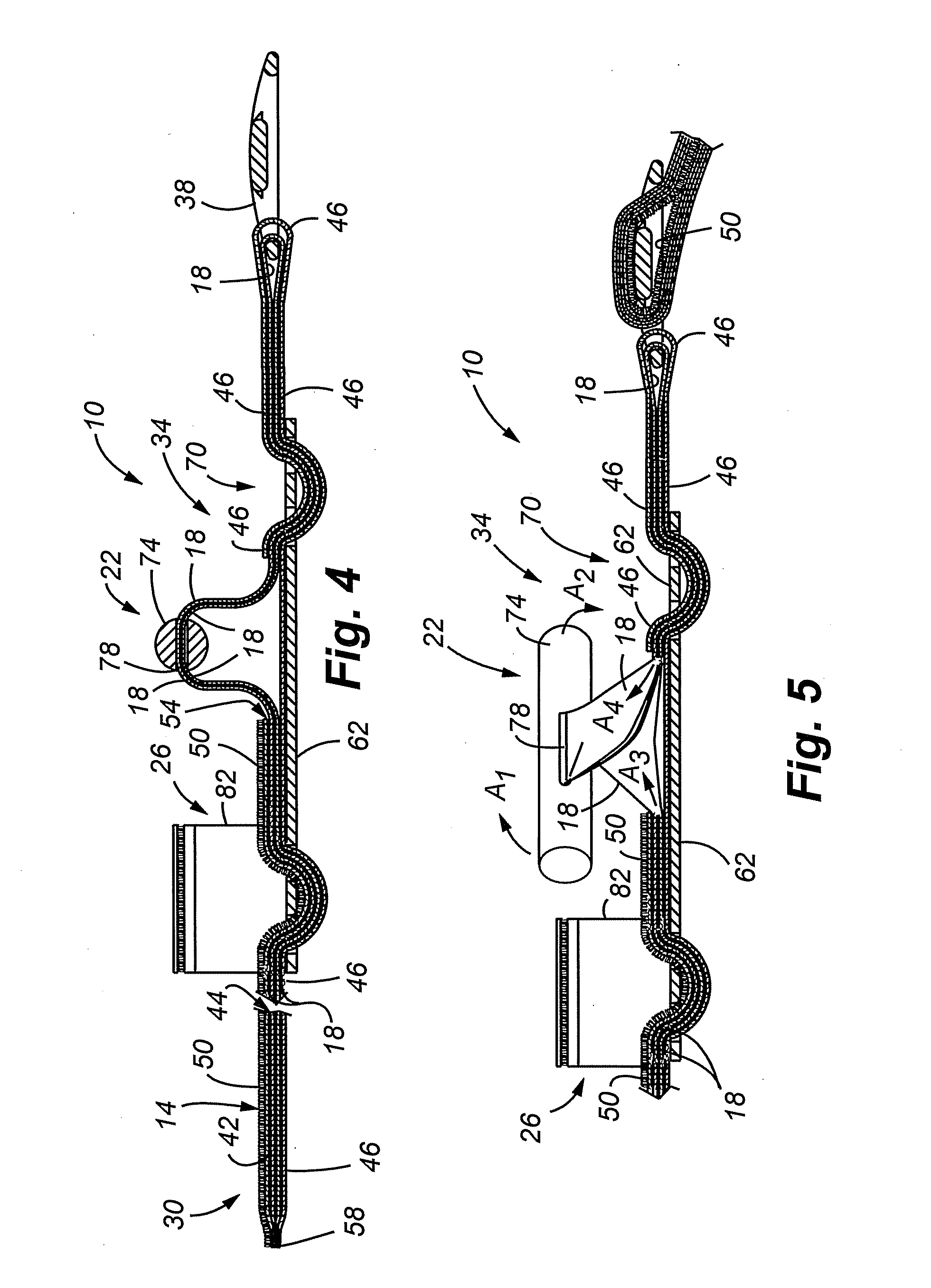Tourniquet and method of use
a technology of tourniquets and stents, which is applied in the field of new tourniquet devices, can solve the problems of high shearing stress, loss of blood, and unnecessary injury
- Summary
- Abstract
- Description
- Claims
- Application Information
AI Technical Summary
Benefits of technology
Problems solved by technology
Method used
Image
Examples
Embodiment Construction
[0043]The present invention comprises a tourniquet that can be manipulated and tightened by the user, including the victim, using one hand, if necessary. In addition, the tourniquet provides improved circulation stoppage by way of an inner tightening strap positioned within a sleeve.
[0044]Referring now to FIG. 1, a tourniquet 10 in accordance with embodiments of the present invention is shown. The tourniquet 10 comprises a first elongated member or an outer sleeve 14, a second elongated member, inner tightening member or inner strap 18, a tightening mechanism 22 and a securing mechanism 26. As shown in FIG. 1, the tourniquet 10 can be applied to an appendage, as for example, leg L, and then tightened to restrict the flow of blood to the leg L.
[0045]Referring now to FIG. 2, the tourniquet 10 is shown prior to use, or in a stretched-out orientation. The outer sleeve 14 comprises a longitudinally extensive material having a first end 30 and a second end 34. In accordance with embodimen...
PUM
 Login to View More
Login to View More Abstract
Description
Claims
Application Information
 Login to View More
Login to View More - R&D
- Intellectual Property
- Life Sciences
- Materials
- Tech Scout
- Unparalleled Data Quality
- Higher Quality Content
- 60% Fewer Hallucinations
Browse by: Latest US Patents, China's latest patents, Technical Efficacy Thesaurus, Application Domain, Technology Topic, Popular Technical Reports.
© 2025 PatSnap. All rights reserved.Legal|Privacy policy|Modern Slavery Act Transparency Statement|Sitemap|About US| Contact US: help@patsnap.com



